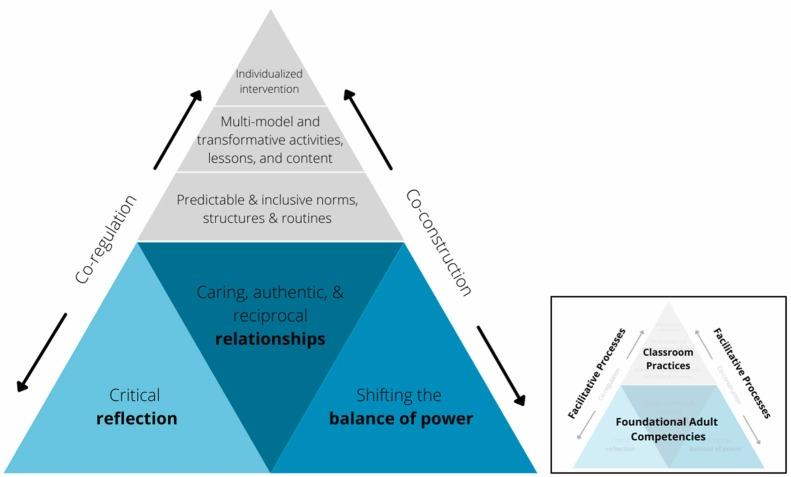future directions for SEL in Schools: Emerging Trends and Innovative Strategies for Lasting Impact
Social and Emotional Learning (SEL) has steadily become an essential part of modern education, equipping students with critical life skills such as empathy, self-awareness, and responsible decision-making. But as our world continues to evolve,so do the needs of students,educators,and communities.In this comprehensive guide,we’ll explore the future directions for SEL in schools,focusing on emerging trends,innovative strategies,proven benefits,and practical implementation tips to ensure a lasting impact.
Why Social and Emotional Learning Matters
SEL has long been linked with improved academic performance, better classroom behaviour, and stronger lifelong well-being. Incorporating SEL into school curriculums not only fosters safer and more inclusive environments, but it also prepares students to thrive in an increasingly complex world. As we look ahead, the integration of SEL is more than just a trend—it’s a necessity for the holistic growth of students.
Emerging Trends in SEL for Schools
The landscape of SEL is rapidly shifting, influenced by technological advancements, changing student demographics, and a deeper understanding of mental health needs. Here are the top emerging trends shaping the future of SEL in schools:
- Equity-driven SEL: Schools are increasingly designing SEL programs that address the diverse cultural,racial,and socio-economic backgrounds of students. Culturally responsive SEL helps bridge gaps and ensures every child feels seen and supported.
- Integration with Technology: EdTech tools, including mobile apps, online platforms, and AI-driven experiences, offer personalized SEL resources. Virtual reality (VR) is also being used for empathy-building simulations and stress reduction exercises.
- Trauma-Informed Practices: Recent events, such as the COVID-19 pandemic, highlight the importance of trauma-informed SEL that supports students facing adversity. These approaches emphasize safety, trust-building, and emotional regulation.
- Family and Community Engagement: SEL is expanding beyond the classroom. Schools are involving families and local communities in SEL activities to reinforce skills at home and in broader social settings.
- Data-Driven Implementation: Schools are increasingly using data analytics to assess SEL program outcomes, personalize interventions, and continually improve effectiveness.
Innovative Strategies for Implementing SEL
to ensure SEL initiatives lead to lasting, school-wide impact, educators are embracing a variety of innovative strategies:
1. Embedding SEL Across the Curriculum
Rather than relegating SEL to a single class or activity, progressive schools weave SEL principles into every subject area. For example, literature classes foster empathy through character analysis, while science projects promote teamwork and decision-making.
2. Leveraging Peer-to-Peer Learning
Peer mentoring programs, student-led support groups, and collaborative projects encourage students to practice SEL skills in authentic ways, building leadership and collective obligation.
3. Utilizing Mindfulness and Self-Regulation Techniques
Modern SEL goes hand-in-hand with mindfulness exercises, meditation, and breathing techniques.These strategies help students manage stress, maintain focus, and develop resiliency.
4. Professional Development for Educators
Ongoing training equips teachers with up-to-date knowledge of SEL best practices, trauma-informed teaching, and culturally responsive approaches.
5. Creating Safe and Inclusive Learning Environments
- Flexible seating arrangements
- Classroom charters
- Restorative justice practices
These foster a sense of belonging and community,prerequisites for effective SEL.
Benefits of Future-Focused SEL Programs
A forward-thinking approach to SEL delivers extensive benefits:
- Improved Academic Outcomes: Studies consistently show a correlation between robust SEL programs and higher test scores, better attendance, and lower dropout rates.
- Stronger Student Well-being: Students develop coping mechanisms for stress, anxiety, and peer pressure, contributing to improved mental health.
- Enhanced Classroom Climate: SEL supports positive teacher-student relationships, reduces bullying, and decreases classroom disruptions.
- Equitable Opportunities for Success: Culturally responsive SEL narrows achievement gaps and fosters a more inclusive school culture.
Practical Tips for Schools: How to Future-Proof Your SEL Strategy
Ready to take your school’s SEL initiatives to the next level? Here are actionable steps:
- Conduct Needs Assessments: Survey students, families, and staff to identify priority SEL areas and potential barriers.
- Select Evidence-Based Programs: Choose SEL curricula and tools that are research-validated and culturally adaptable.
- Prioritize Continuous Improvement: Collect data, solicit feedback, and refine your SEL approach regularly.
- Engage Stakeholders: Involve families, community partners, and students in program design and delivery.
- Model SEL at Every Level: School leaders and teachers should practice what they preach,demonstrating emotional intelligence and self-care.
Case Studies: SEL in Action
To illustrate the transformative power of SEL, here are brief snapshots from schools leading the way:
Urban Elementary School, Chicago
By implementing a trauma-informed SEL program and training staff to recognize signs of stress and trauma, this school decreased disciplinary referrals by 30% and improved reading scores across all grade levels.
Rural High School,Texas
A peer mentoring SEL initiative in this school resulted in stronger student connections,lower incidents of bullying,and improved graduation rates—demonstrating SEL’s unique ability to foster supportive school communities.
Firsthand Experience: Voices from the Classroom
“Before our school embraced SEL, I saw students struggle with anger and conflict. Now, with daily circle time and restorative practices, my students communicate better and resolve issues peacefully. SEL is changing lives—mine included!”
—Ms. Ramirez, 6th Grade Teacher
“Integrating SEL into our curriculum boosted not only academic achievement but also student happiness. When kids feel understood and valued, learning soars.”
—Dr. Jamaal Rivers, Principal
Resources for Forward-Thinking SEL Implementation
- Collaborative for Academic, Social, and Emotional Learning (CASEL)
- Edutopia: Social and emotional Learning
- Panorama Education: SEL Measurement Tools
Conclusion: Shaping a Resilient Future with SEL
As schools continue to adapt to a rapidly shifting world, social and Emotional Learning stands as a cornerstone of student success and personal growth. By harnessing emerging SEL trends,embracing innovative strategies,prioritizing equity,and engaging the broader community,educators can create lasting positive change. The future of SEL in schools is bold, inclusive, data-driven, and deeply human—empowering generations to thrive, not just academically but in all aspects of life.

